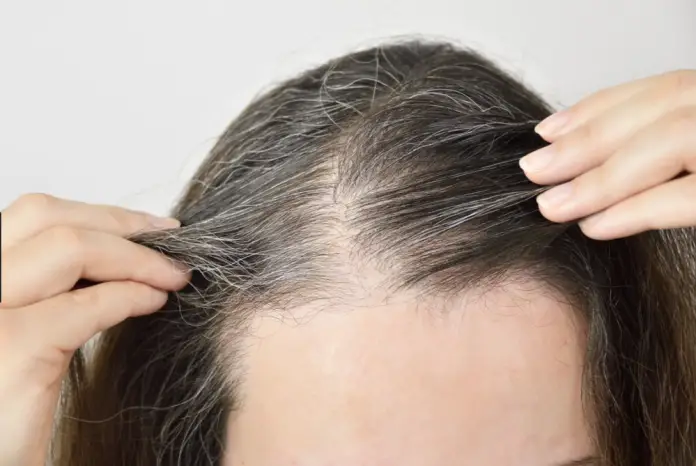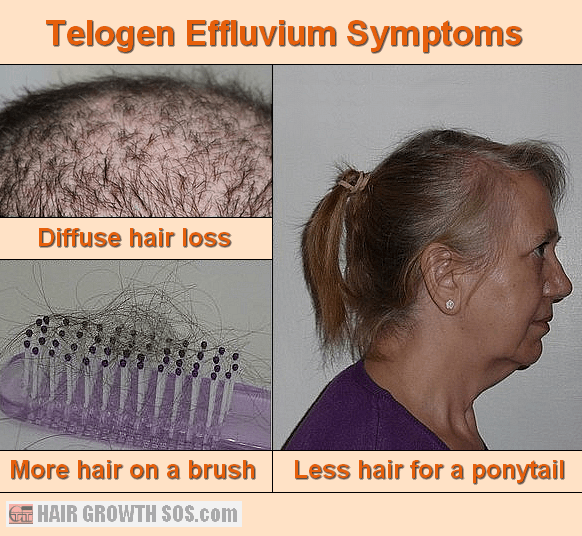Table Of Content

If this number significantly lowers during the resting (telogen) phase of hair growth, more dormant hair follicles will present. Keep reading to learn what causes this condition and what you can do to treat it. Regrowth usually occurs after removal of the trigger causing telogen effluvium. However, repeated episodes of acute telogen effluvium can sometimes evolve into female pattern hair loss.
I Started Losing My Hair at Age 29—Here’s How I’m Dealing
They’ll likely use a combination of your health history — including any recent illnesses, surgeries, life stressors, and family history — and a physical exam to help narrow down the causes. Tinea capitis, also called ringworm of the scalp, is a fungal infection that can affect the scalp and hair shaft. Over time, if not treated early, the size of the patch or patches will increase and fill with pus. It’s also the most common cause of hair loss, affecting up to 50% of people. It’s typical to lose between 50 and 100 hairs a day, according to the American Academy of Dermatology (AAD). With about 100,000 hairs on your head, that small loss isn’t noticeable.
What’s the difference between telogen effluvium and androgenic alopecia?
While I already take Lexapro for anxiety and depression, they suggested additional stress-relieving supplements. I went with the Nue Co.'s Mood Capsules and Organic India's Tulsi Ashwagandha Tea, in addition to my regular yoga classes and outdoor runs. If you suddenly lose a lot of hair, talk to your doctor for help figuring out what caused it.
Using harsh hair products
Its prevalence is around 20%, occurs in sites where hairs are actually shedding and it may be regarded as a sign of severity of the disorder and of the fact that TE is going to continue for further three months at least. In general, trichodynia is a complex symptom, varying from pruritus to a needle prick. The currently available FDA-approved standard drugs minoxidil and finasteride are neither efficient catagen inhibitors nor anagen inducers [5].
Healthcare professionals

Psychological stress, systemic inflammation, oxidative stress, and hypoxia are potential culprits. PRP and regenerative strategies (AD-MSCs, HFSCS, and LLLT) aim to improve scalp angiogenesis. Promoting angiogenesis and protecting the cells from ischemia are regarded as important action mechanisms in treating COVID-19-induced hair loss. The main difference between the two types is when they happen in the hair growth cycle.
Having lot of hair fall recently? Stress might be the reason - The Times of India
Having lot of hair fall recently? Stress might be the reason.
Posted: Fri, 03 Nov 2023 07:00:00 GMT [source]
Stress management
Disease correlation with triggers, and the timing of hair loss should be explained and frustrations addressed. Hair is an important part of the human body; the degree of psychological disability due to hair loss varies from person to person [25]. There are various factors that can initiate disturbance in the normal hair cycle.
Members are sometimes called “long haulers” because they discuss long-term effects of the disease. In most cases, your hair will start to grow again after your chemotherapy is over. Your hair might start to grow again even if your chemotherapy continues. Anagen effluvium causes faster and more dramatic hair loss than telogen effluvium.
Summertime UV irradiation may cause a premature teloptosis later in the fall, but a synchronization factor (AGA?) should be regarded as a co-factor (collective teloptosis). The relationship between emotional stress and hair loss is ambiguous since hair loss itself is a source of emotional stress to the patient [11]. The regrowth process can be gradual, and it may take several months for noticeable improvement to occur. Full recovery from telogen effluvium can take anywhere from 6 to 12 months.
Differential Diagnosis
If you’ve noticed an excessive amount of hair shedding, a receding hairline, or that the hair on the crown of your head becoming increasingly sparse, you’re probably experiencing a form of hair loss. Losing your hair can be a distressing experience, but you’re not alone. This is true for damaged hair follicles from too-tight hairstyles, damaged hair follicles from chemicals applied to the hair, and damages caused by certain autoimmune diseases. Alopecia areata is an autoimmune condition that causes your immune system to attack hair follicles, resulting in bald patches that can range from small to large. Female pattern baldness often results in thinning all over the scalp and might look like widening or thinning around the part.
Some studies suggest that telogen effluvium can also be connected to low levels of iron, so include iron-rich foods like leafy vegetables, lentils and liver where you can. If you like the idea of adding supplements to your routine, there are some which are specifically formulated to contain ingredients that increase hair thickness and health. Because the telogen phase typically lasts several months, the enhanced shedding will also continue for 2-3 months after the stressor is removed. Telogen effluvium is excessive hair shedding during the telogen, or resting, phase of the hair cycle. Anagen effluvium occurs during the anagen phase, which is the part of the cycle where hair is typically growing from the follicles. In a normal healthy person's scalp, about 85% of the hair follicles are actively growing hair (anagen hair) and about 15% are resting hair (telogen hair).
Treatment exists to reverse hair loss, but hair will typically grow back in three to six months without treatment. Although reducing your stress levels might seem insurmountable, making sure you’re eating the right things will go a long way to setting a good foundation for optimum hair growth. A healthy balanced diet is also important in stress reduction too as it can support a healthy immune system, repair damaged cells and even reduce elevated cortisol levels. Getting enough protein in your diet is essential as it provides the building blocks for proper hair growth; meat, tofu, eggs, beans, grains, nuts, and fish are all good protein sources.
Regrettably, Kligman was unsuccessful in finding any histological inflammatory clues reporting only an increased number of telogen follicles. Whiting introduced the concept of the possible chronicity of the disorder5 and confirmed the histopathological findings of Kligman. Both hyper- and hypothyroidism can cause telogen effluvium, and this is reversed once the euthyroid state is achieved [13]. Chronic systemic disorders such as systemic amyloidosis, hepatic failure, chronic renal failure, inflammatory bowel disease, and lymphoproliferative disorders can also cause telogen effluvium [12]. It is also reported in some autoimmune diseases including dermatomyositis, chronic infections such as HIV, and secondary syphilis. Inflammatory disorders such as psoriasis and seborrheic dermatitis can also lead to diffuse telogen hair loss [11].
I learned to appreciate my quirks, the parts that characterize me, to enjoy my own company no matter how short or thin my hair. The state of our physical appearance — including our hair — changes many times throughout our life, but the core of our being stays the same. As my hair regains thickness, I'll still brush it back into an up-do more often than not. Telogen effluvium is painless, and doesn’t involve itchiness or scaling of the scalp, so if any of those other symptoms accompany the hair loss, it should be evaluated by dermatologist. A doctor might order blood tests to verify there are no thyroid abnormalities, or low iron or vitamin D, all of which can also cause rapid shedding.
It occurs when there’s a change in the number of hair follicles that are growing hair. In PRP treatments, a person's blood is drawn and spun in a centrifuge to create a layer rich in platelets, which are blood cells active in clotting that contain growth factors. In some patients, hair shedding continues to be intermittently or continuously greater than normal for long periods of time, sometimes for years. The hair cycle appears to be reset so that the anagen period is shortened.

No comments:
Post a Comment